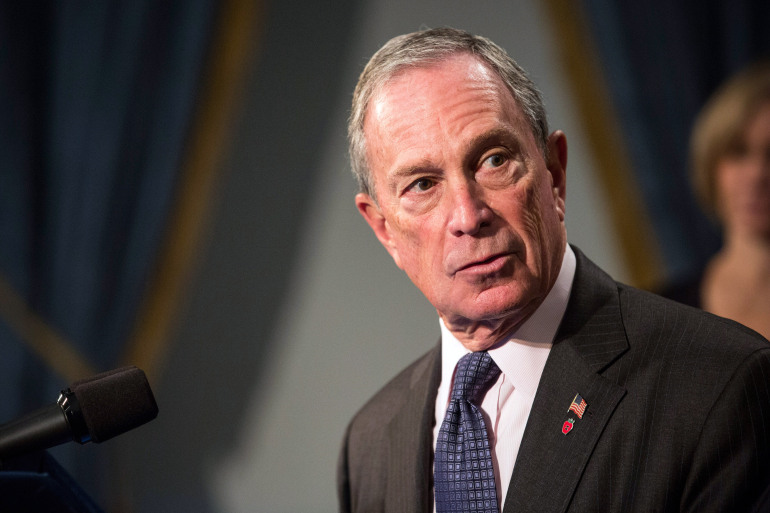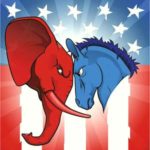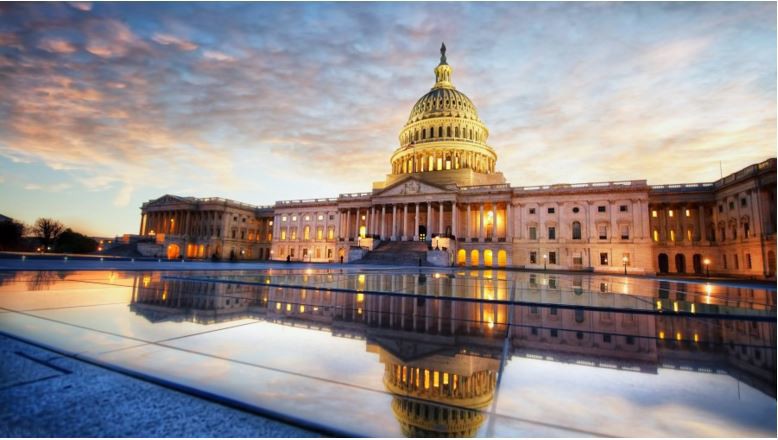Voters from Wilmington, N.C., to Washington State cringe as they see two highly unpopular candidates, Republican Donald Trump and Democrat Hillary Clinton, moving closer to a general election showdown.
How unpopular are these two? According to one recent analysis, Trump has the highest unfavorable rating (60%) within the overall electorate of any party nominee since Gallup starting keeping track of such metrics in 1992. And Clinton? She would be the third-most unpopular nominee in that same period of time (at 52% unfavorable).
In an election season when unconventional wisdom prevails, again and again, it seems unlikely that voters are ready to simply cast their ballots in November for the proverbial “lesser of two evils.”
Maybe a record number of voters will stay home. Or maybe the unprecedented events of Election 2016 will generate a final act – a thriller of an ending — in which the electorate rejects both tattered nominees and gravitates toward a far more mature, mainstream candidate, a third option, who shuns the slippery messaging of Clinton or the childish name-calling of Trump.
The increasingly distasteful, hyper-partisan system in which two political parties rule the roost is coming unraveled. According to The Atlantic, J. Ann Selzer, an independent pollster in Iowa, said: “We are entering an era where there isn’t anything in the past that can guide us, in terms of how this is going to play out.” The result will depend on who shows up to vote – and just maybe, on which contender they dislike the least.
The anti-anti-establishment
Yet, could this be the year that: an angry, anti-establishment mood paves the way for a Trump nomination; that same revolt against the status quo cripples Clinton in the general election; and a voter recoil from the two weak candidates, a fully rational response in this crazy election year (an anti-anti-establishment sentiment), opens the door wide for a third party candidate unlike at any time in a century?
Obviously, the one political figure who stands at the ready to present a significant challenge to the coming fractious standoff in November, with two likely party nominees on the road to gridlock in Congress, is former New York City Mayor Michael Bloomberg. Pundits brush aside the prospect of a three-way race, citing recent attempts by independent candidates that fell far short.
Yet, this election season offers such a broad opening for a third party candidate that a legitimate three-candidate race could not have been imagined just a year ago.
If we take a look at the last substantial independent run for the White House, in 1992, President George H.W. Bush was highly unpopular – No. 2 on Gallup’s unfavorability rankings for a party nominee – and Democratic challenger Bill Clinton was a deeply flawed candidate. As a result, eccentric billionaire Ross Perot surfaced to garner 20 percent of the vote.
But Bush vs. Clinton was a presidential contest that took place in a different era. Trump vs. Clinton presents an entirely new playing field.
What’s more, Perot’s lack of political smarts certainly prevented the maverick Texan from winning any Electoral College votes in ’92. In contrast, Bloomberg would serve as a formidable candidate, a moderate with a track record, and an un-beholden billionaire with a far more compassionate stance toward the working class and the poor (based on his philanthropic efforts) than Trump.
Green Party a major factor
Bloomberg had said he will make a decision by early March whether to enter the fray. He’s up against some substantial state-by-state deadlines to gain ballot access in November. But the national media has ignored the support that the former mayor enjoys with the Green Party, which, as in past years, is eager to supply the centrist politician with their nomination-spot on the November ballots.
The Green Party, a relic of the push in the early 2000s for more environmentally friendly policies at all levels of government, has already qualified for the general election ballot in 37 states. With Bloomberg’s considerable personal finances, it’s not unrealistic to expect that, at this late date, he could supplement that status and qualify for nearly every state ballot.
To be clear, an attachment to the Green Party would amplify Bloomberg’s liberal views on climate change. In addition, since he first made noises about running as an independent for the Oval Office in 2008 the business mogul has adopted some “nanny state,” leftist positions on guns and public nutrition.
But it’s certainly within the realm of possibility in 2016 that the self-made businessman could overcome these negatives to win enough states to block Clinton and Trump from capturing a majority of Electoral College votes.
At that point, the denouement of the 45th presidency would emerge, under our constitutional process, as a decision among the GOP-controlled House of Representatives, where an increasing number of mainstream Republicans have expressed dismay at the prospect of a President Trump. And none would dare vote for Clinton.
In an election year of partisan polarization, Bloomberg would represent the distinct plurality of emerging American voters who do not march in lockstep with either party but instead share a mix of views on a wide array of political issues facing the nation.
Lack of faith in government
At a time when a large bloc of the nation expresses a lack of faith in government – good government, rather than big or small government – Bloomberg’s resume as a big-city mayor who focuses intently on pragmatism and evidence-based solutions cannot be ignored. Clearly, he could run as the anti-Trump and the anti-Clinton at the same time. His personal political journey, rejecting the Republican Party and the Democratic Party, arriving at an independent viewpoint, would also appeal to today’s restless electorate.
What’s more, we are eight months in advance of a general election while most voters have already personally ingrained their negative views of Trump and/or Clinton, beyond the relentless, multi-million dollar ad campaigns that will ensue.
One political professor said this of the upcoming fall campaign:
“It’s not a happy thing, not something you would wish to have in our elections, that our electorate has such a dislike or unfavorable view of the front-runners. If both front-runners have more negatives than positives, that doesn’t speak well” of the political environment.
Still, imagine a three-way race in which one candidate stands for a new politics, an unrelenting effort to break free of the mindless polarization and demonization that dominates Capitol Hill.
It’s a longshot. But in 2016, many independents, moderates and other mainstream voters maintain an insistence that, regardless of the two parties’ increasingly dysfunctional nomination process, a candidate with a shot at fixing Washington and solving problems should realize the opportunity to take hold of the White House in January 2017.







